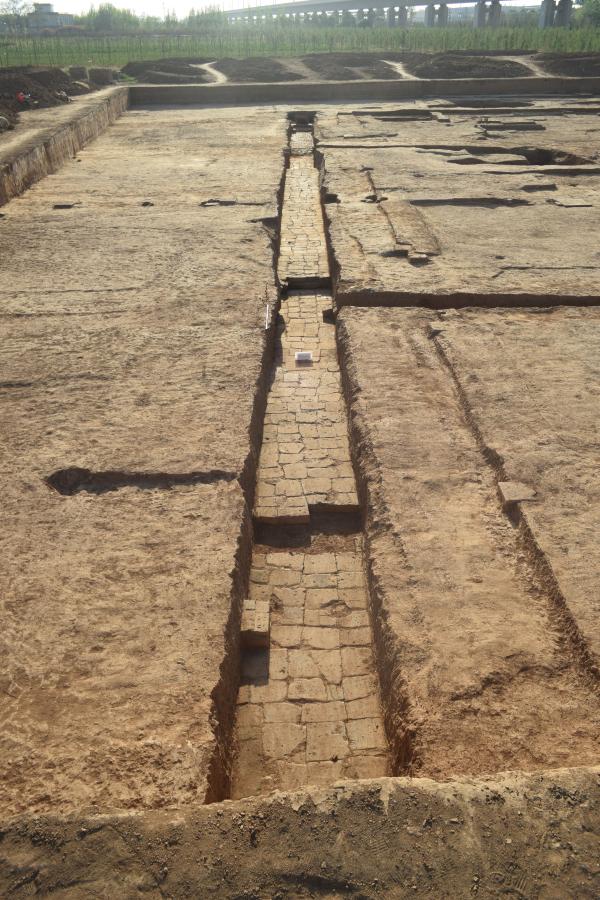
Photo taken on April 17, 2019 shows the drainage system discovered at an imperial tomb of the Eastern Han Dynasty (25-220) near the Baicaopo Village of Luoyang City, central China's Henan Province. (Luoyang City Cultural Relics and Archaeology Research Institute/Handout via Xinhua)
ZHENGZHOU, Dec. 29 (Xinhua) -- Archaeologists in central China's Henan Province have unearthed ruins of a 1,840-year-old stone vessel, which has helped confirm the tomb location of an emperor in the Eastern Han Dynasty (25-220).
The ruins of the mausoleum are near the Baicaopo Village in Yibin District in the city of Luoyang. Based on written records, archaeologists used to speculate that the mausoleum belonged to emperor Liu Zhi, but had no evidence to prove it.
According to the latest excavation, the 25-cm-tall basin-shaped vessel with a diameter of 80 cm was found inscribed with a manufacturing year -- the third year of Guanghe, or AD 180.
Wang Xianqiu, an associate researcher of the Luoyang City Cultural Relics and Archaeology Research Institute, said Guanghe was a reign title of Liu Zhi's successor Liu Hong, and the stone vessel was produced when Liu Hong was building the mausoleum for Liu Zhi.
"Together with the previous documents about the location of the emperor's tomb, the discovery makes us almost certain that it is the tomb of emperor Liu Zhi," said Wang, who led the excavation project of the mausoleum.
He said the finding was of significance for studying the tomb layout and the burial system for emperors in the Eastern Han Dynasty.
To date, yard, corridor, well, path and drainage channel ruins have been discovered at the location, according to Wang. Enditem



